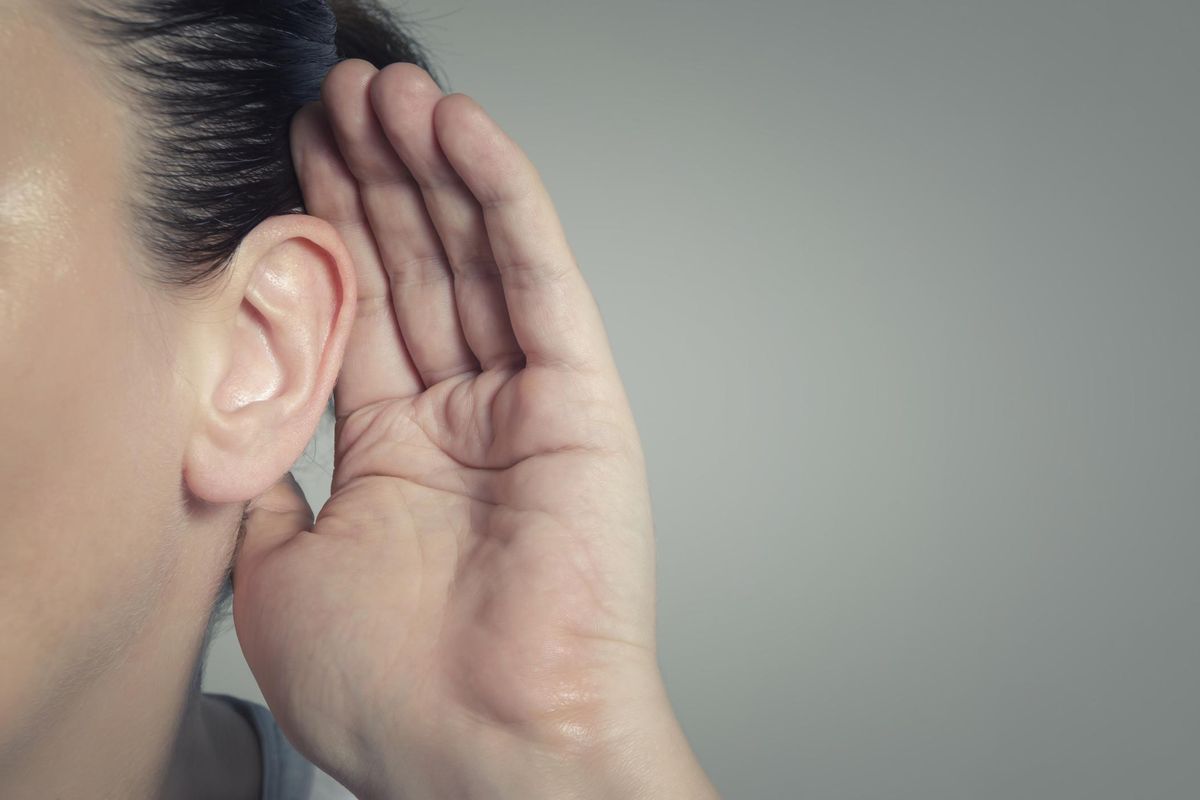This article has been archived. We will no longer be updating it. For our most up-to-date information, please visit our preventive health information here.
When I was a teenager, I went to lots of rock concerts. I started young; in fact it was my mother who took me to my first concert (I'm dating myself, but I think it was Paul Revere and the Raiders). But she didn't go in with me—she dropped my friend and I off in front, declaring the concert too loud, and waited in the parking lot. I thought that a bit odd at the time, although I didn't really mind too much since it gave me a feeling of independence.
And I continued to go to rock concerts, eventually without needing transportation from my mother. I remember alternately hating/loving the feeling of walking out with my ears ringing. I mean, it was exciting at first, in that it meant that the music was really, really good (or did it?). But then, hours later, the ringing that persisted got to be a bit of an annoyance.
A few years ago my husband and some friends got Bruce Springsteen tickets. We sat fairly close to the stage and you know what? (Before I tell you, if you are a Springsteen fan, please promise you won't blacklist me.) I was my mother. I walked out, unable to tolerate the painful ringing in my ears.
And then I spotted a security guard walking around the lobby with neon green rubber peaking out of each ear. "Hey, are those EARPLUGS?" I asked, hoping for the right answer. "Yeah," he said. And then he reached deep into his pocket and pressed a pair into my hand. "These are my last pair," he said solemnly, and then walked away before I could thank him.
Risking derision from my husband and friends, I decided it was more important to protect my hearing than my ego. I put the earplugs in, hoping that my hair would disguise the fact that I was actually wearing earplugs at a Springsteen concert. But wouldn't you know the minute I got back, my new look garnered some good-natured ribbing.
I'm hardly alone. More than 31 million Americans have some degree of hearing loss. That's about one in 10. And the numbers are bound to grow, since many of these are like me—baby boomers. Two out of three are below retirement age. According to a survey by the Better Hearing Institute, about 15 percent of Americans between 46 and 64 have hearing problems. Yet only about one in five people who could benefit from hearing devices actually wear them.
Unlike eyeglasses, which can be so fashionable and fun, hearing aids are different. Wouldn't it be nice if someone could devise a hearing aid to look like an earring? I'll bet then more people would wear them (at least, more women, that is).
Hearing loss does not only affect your ability to hear. It can affect your short-term memory. What's the association? A recent study at Brandeis University found that older adults who had mild to moderate hearing loss used so much cognitive energy trying to listen that it diminished their ability to remember a short word list. That's not all. It can be exhausting to live with hearing loss—you have to concentrate so hard, particularly in a noisy setting. It's no surprise, then, that the National Council on Aging (NCOA) reports a higher rate of depression, anxiety, social isolation and paranoia in hearing-impaired (but untreated) adults age 50 or older compared to those who wear hearing aids.
Hearing loss occurs over time and with regular and repeated exposure to loud noise. That's why it's important to know how to protect yourself from damage in the first place. Some helpful tips:
- Wear earplugs around loud noises. That goes for lawnmowers, as well as Springsteen concerts (sorry, Bruce and fans). The earplugs must fit snugly with an airtight seal to be effective. Earmuffs which cover the entire outside of the ear can work, too. But don't think you can stuff a tissue in your ear—cotton will not do the job.
- Watch the volume on your headset. I am probably guilty of turning mine up too loud when I'm on the treadmill; the music really helps motivate me. But if your neighbor can hear the music, it's likely too loud for you to be listening to at that volume.
- Be aware that some medications can damage the inner ear (like the antibiotic gentamicin and certain chemotherapy drugs). Very high doses of aspirin and nonsteroidal anti-inflammatory drugs (NASAIDs) can also temporarily affect your hearing, whether through hearing loss or ringing in the ear (tinnitus), as can antimalarial drugs or loop diuretics. Likewise, some illnesses that result in high fevers, like meningitis, can damage the cochlea.
Unlike eyeglasses, which can be so fashionable and fun, hearing aids are different.
As one of my readers, Vera, pointed out in an e-mail, "They (glasses) don't denote age—since plenty of young people wear them, and they can make a woman look fashionable or more serious, as she chooses. Unfortunately, hearing aids still signal AGE. Fortunately, they have shrunk since my grandfather lugged around a machine the size of a transistor radio in his shirt pocket, with big, obvious buttons and wires attached to his ears. Now they slip inside your ear and disappear."
In fact, Vera is correct. A fact sheet called "Baby Boomers, Hearing Loss, and Hearing Devices" from betterhearing.org states the following:
- Advances in digital technology have dramatically improved hearing aids. They are smaller than ever with far better sound quality.
- Top-of-the-line models feature "directional" or "high definition" hearing. These devices use two microphones and an algorithm to enhance sound coming from the front (the person you are talking to), while tuning down sound coming from behind (the rest of the noisy party).
- The creation of devices using Bluetooth communication technology can turn select hearing aids into wireless, hands-free headsets.
- A promising advancement related to the use of Bluetooth technology is the ability to make hearing aids compatible with cell phones, currently of serious concern to hearing aid users.
- Nine out of 10 hearing aid users report improvements in their quality of life, according to a survey of more than 2,300 consumers by the Better Hearing Institute.
Curious to learn more?
Tips to Protect Your Hearing.
Here is a list of sound levels of common noises so you can put it all in perspective.
Sound Levels of Common Noises
| Decibels | Noise source |
| Safe range | |
| 20 | Ticking watch |
| 30 | Quiet whisper |
| 40-45 | Refrigerator hum |
| 50 | Rainfall |
| 60 | Normal conversation |
| Risk range | |
| 80 | Alarm clock |
| 85 | City traffic |
| Injury range | |
| 100 | Blow dryer |
| 100 | Subway |
| 105 | Power mower |
| 110 | Chainsaw |
| 120 | Rock concert |
| 120 | Thunder |
| 120-150 | Motorcycles |
| 120-150 | Fireworks |
| 120-150 | Small firearms |
| 130 | Jet plane (100 feet away) |
Sources: National Institute on Deafness and Other Communications Disorders, National Institute for Occupational Safety and Health, American Tinnitus Association







